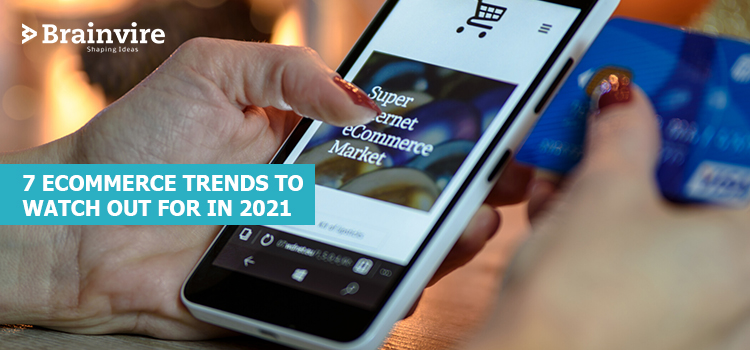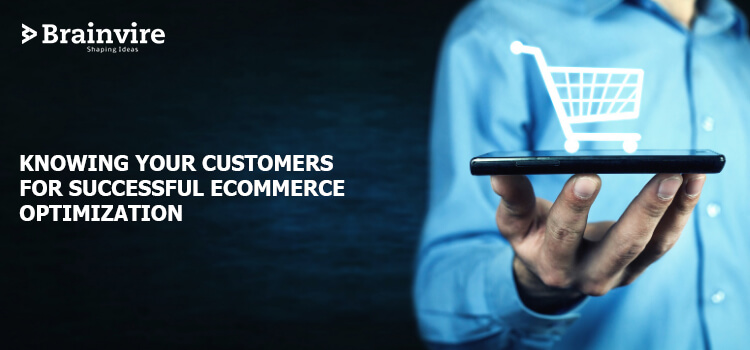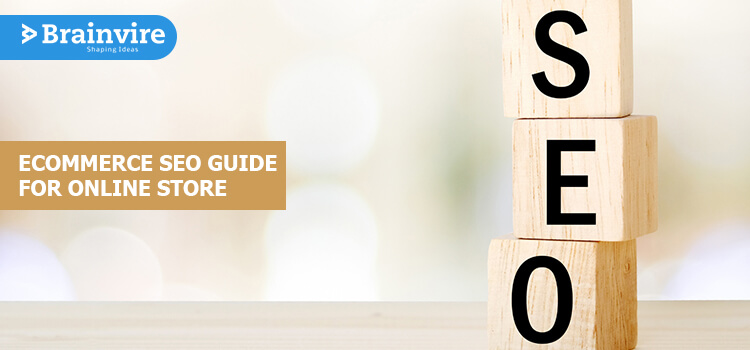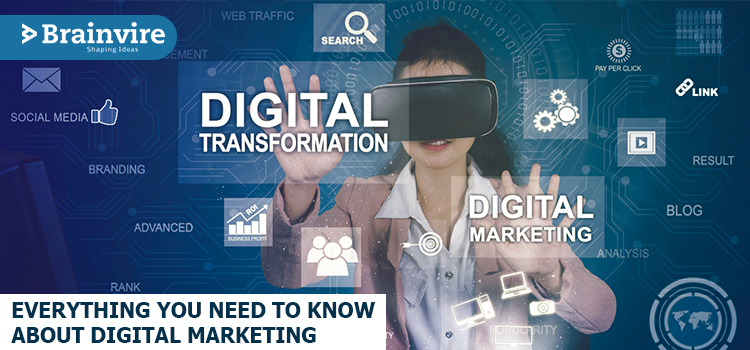
$3 trillion is the estimated worth of eCommerce to date, which suggests the promising future of this booming market. In the face of the growth of smartphones and mobile devices, the success of the eCommerce industry is growing worldwide. This is a prime reason why more retailers are opting to grow eCommerce.
To build next-gen online stores, the software development company combines the new eCommerce developments and technical advances.
Let’s discuss some of the top trends in a booming eCommerce industry that in the year 2021 and beyond will shape the future of online business.
Top E-Commerce Trends to Watch in 2021
1. Marketplaces will rise
Suddenly, businesses that didn’t even have a website before 2020 have come online. Consumer behavior, however, tends to favor convenience. In order to cope with a rise in traffic and the shipping conditions currently being imposed on them, many newer eCommerce companies lack the backend infrastructure needed in ecommerce website development.
Companies such as Amazon and Walmart, on the other hand, have the expertise and infrastructure needed to attract today’s consumers. Other niche markets continue to expand to accommodate new digital entrepreneurs, such as Etsy.
With the mental satisfaction of 2-3 day delivery and free returns on most products and most markets, customers will demand the same from all other eCommerce website developments as shoppers know the convenience of shopping on a website is simpler and more convenient than shopping on multiple eCommerce stores.
Big eCommerce businesses provide the best of both worlds: they provide customers with value, low entry barriers for online purchases of brands, and user-generated content that perpetuates both the relevance of the product and content as well as the search rating.
2. AR & AI Will Enhance Experience
By 2022, online sellers are expected to invest over $7.3 billion in Artificial Intelligence (AI). Over 120,000 brick-and-mortar stores can now use AR to give their customers by 2022 a richer shopping experience. All these facts reflect the bright future for both new AI and AR technologies.
On the one hand, by offering customized suggestions based on the shopping habits of the consumer, AI technology will serve as a virtual in-store assistant, and on the other hand, AR can make the shopping experience more enjoyable by interactively providing necessary details about the product. The eCommerce development company will integrate AI and AR-based features in the eCommerce app as well as website and assist its clients to grow their online sales.
3. Multiple payment options
People now prefer eCommerce sites or apps that offer different payment options, including mobile wallets, credit cards/debit cards, and net banking, for example. There is no irony in saying that if you do not provide your customers with a chosen payment method, they will not buy again from your online store.
We will witness a cryptocurrency-based payment trend in 2021, and eCommerce companies will begin accepting bitcoins and other cryptocurrencies.
4. Shoppable video ads
In 2021, the use of social media will not slow down, and brands will start to advertise on platforms such as TikTok and Instagram in different ways. Zoomers spend hours flipping through feeds from TikTok and Instagram. Merchants are in seventh heaven; the best way to meet the curious young target audience is through video.
Gen-Z can literally make purchase decisions from their social media feed, and videos let them shop instantly. Brands have already begun to get a lot of value from putting ads on apps such as Instagram and Snapchat in posts, so this is just the next step in the evolution of selling social media.
We saw Facebook launch Instagram Shops and Shopify partner with TikTok this year.
5. Omnichannel selling
The new standard would become omnichannel selling. With the public cloud services coming in with tools like Amazon Personalize and Pinpoint, we’re really seeing this. In an interesting way, this may theoretically be disruptive, but omnichannel marketing is the bottom line, and those kinds of capabilities would be cheaper and more available. 2021 will be the year this moves from something some are doing to something most are doing.
A survey conducted by Harvard Business Review has revealed that as many as 73% of customers prefer multiple channels during their shopping journey.
Many organizations are now aware that consumers want to experience advertising in different ways. Tablets, cell phones, and desktops are just the beginning. Amazon Pinpoint and Amazon Personalize are two Amazon Web Services (AWS) products that allow brands across multiple channels to enhance the consumer experience and connect with customers.
6. Personalization in shopping
When their experience is customized to their particular needs, consumers enjoy it. Smarter HQ has learned that only personalized messaging is used by 72 percent of customers.
Although personalization was originally limited to email marketing, what is possible has changed consumer perceptions and technology capabilities.
Personalization helps to build a long-lasting customer relationship by capturing information about the customer with their consent and using it to remember details such as the last time they made a purchase, the types of items they currently purchase and then include suggestions for the next steps.
Brands can also use information stored in a CRM database to create a customized customer service experience, no matter where a customer chooses to connect, whether by email, phone, or another channel.
7. Sustainable consumerism
Sustainability is no longer reserved for a few labels. In reality, in many countries worldwide, shifts in the economic, cultural, and social landscape have shifted the emphasis to producing goods that protect the environment.
Brands like Amazon have made a commitment to sustainability, and other eCommerce brands are expected to follow suit as humans search for ways for future generations to minimize waste and protect the planet.
According to the Harvard Business Review, green customers are also flexing their buying power, with 65 percent of shoppers choosing to make purchases from brands striving for sustainability.
Conclusion
These trends give us a glimpse of the eCommerce business’s future. By transforming their models, numerous companies across different business sectors will opt for online selling. There, resources for ecommerce development would remain handy for them to make the most of a growing eCommerce industry.
Brainvire is a renowned eCommerce development company. During ecommerce website development, our in-house team of seasoned eCommerce developers takes every aspect of your business and industry trends into account. Brainvire is a one-stop solution for the development of custom applications across various industry sectors, including retail, manufacturing, utilities, and healthcare.







